-
Posts
5,391 -
Joined
-
Last visited
-
Days Won
3
Content Type
Profiles
Forums
Blogs
Gallery
Events
Store
Posts posted by Gordon Williamson
-
-
You are a brave man to buy one of these. You'll find that opinions on these differ greatly. Some like them but I've found the majority of serious KM collectors won't touch them.
I remember when great numbers of these appeared on the market around 40 years ago, the little "o" mark led to it being labelled as S&L but some examples with other markings appeared including the Junker L/12 mark. The story going around back then was that these were leftover wartime stock with no pins which had been "refurbished" hence the pin unlike any other badges.
This type with the wierd hinge was featured in a German magazine a few years back and labelled as am out and out fake which had "erroneously been identified as S&L". (see pic attached here)
Whatever the truth of the matter they are highly controversial and a lot of people wouldn't touch one. I wouldn't have one in my collection but thats just me, some people may be happy to accept them.
 0
0 -
The U-Boat tenders were a mixed bunch, many of which were originally merchant vessels rather than purpose built naval ships. "Lech" for instance started off as the liner "Panther" with accomodation for around 400 or so, went into the KM as a U-Boat Tender, after the war was an Italian liner, the "Mare Ligure" and eventually became the Israeli liner "Artza".
Some tenders were relatively small and basically provided little more than a depot ship for the U-Boats to tie up against when in port, limited workshop facilities for minor repairs etc, whilst others like "Wilhelm Bauer" were also accomodation ships which could accomodate several hundred crewmembers.
Tenders could be allocated to a specific Flotilla, i.e. "Saar" (which just to confuse matters was originally known as a Tender, then a Begleitschiff) was first allocated to Weddigen Flotilla, then Saltzwedel. But could also be allocated to a base port, and service more than one flotilla - particularly the case with some of the bigger ex-liners which served as accomodation ships.
Confused ? -You will be.
0 -
Superb photo ! Not often you will see the Narvik being worn on Handelsmarine uniform !!
0 -
Hi Erich
Yes, looking forward to seeing the finished work myself. Roger told me he was looking forward to working on it through the Spring and Summer so hopefully that suggests it'll be finished and out before the end of the year. There is a lot of material for him to plough through, with over 1,000 photos.
As to the tallies I don't believe these two existed
Unterseebootstender D. Hertha
Unterseebootstender D. Odin
On the other hand Unterseebootstender Mosel did exist but isn't on that list. There are others that existed that are not on the list (Führerboot des F.d.M. etc) and I'm not so sure about some of the Kreuzer titles which I suspect were Reichsmarine not Kriegsmarine and probably only made in the earlier block script.
0 -
Superb ! Scratching building in 1/48 scale with that level of detail. Quite atsonishing !
0 -
An interesting list and quite useful for some areas but like several others it seems to be based on the assumption that for each ship there actually was a tally ribbon. I've yet to meet a serious tally ribbon collector who believes in a Bismarck or Tirpitz ribbon and some of the U-Boat Tender ribbons listed didn't exist.
I think we'll have to wait for the Wedeking & Bodeux book for a really definitive and accurate study.
0 -
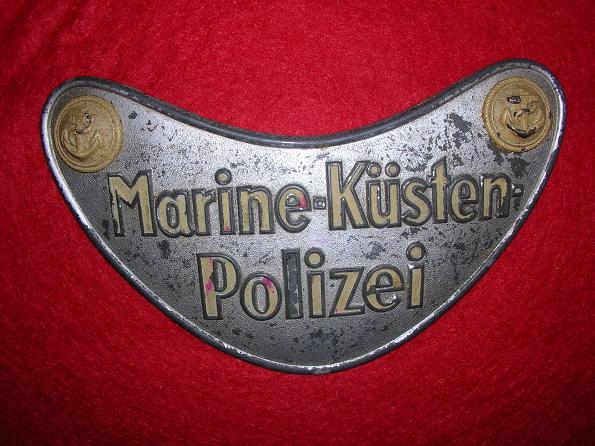
Hello!
This is mine.Not the best conditionbud nice.
All the best
Nesredep
Yes, still very nice. Weitze asks over 1700 Euro for one of these.
0 -
Nice one Gordon
 How do you clean those?
How do you clean those?Tricky when you don't know what caused the staining. You can cause more problems than you cure, but I've had ribbbons in the past that cleaned up well by rubbing gently with a cotton bud dipped in warm water. So long as its only the black silk ribbon that's dirty, it isn't so bad. The main thing is that the gold wire hasn't deteriorated.Once that starts to go, there ain't much you can do.
0 -
Looks like a good original piece but as you said, the condition is not great. The fact that you know the name of the person it was awarded to will help, but in this condition I would estimate it to be not much more than around 275-300 Euro.
0 -
I have never seen one of these with a makers mark . The MKP was a fairly small organisation, much smaller than the Feldgendarmerie, (which is why these Gorgets are so rare) so I suspect that maybe only one manufacturer made these, but I have never sseen any information on who it might be.
0 -
No, never with a chain, these were only made with a pin fitting.
0 -
Well spotted Rick ! Eyes like a Hawk. I hadn't noticed that tiny light speck on the ribbon but it is indeed the crossed swords of a KVK.
The Italo-German ribbon dates the photo to some time before March 1944 when the wear of Italian awards was prohibited and after whenever in 1943 the M43 cap was issued.
0 -
Size comparison with Army Feldgendarmerie Gorget.
Now, if I could only replace my long-gone Marineküstenpolizei cuffband I'd be very happy indeed.
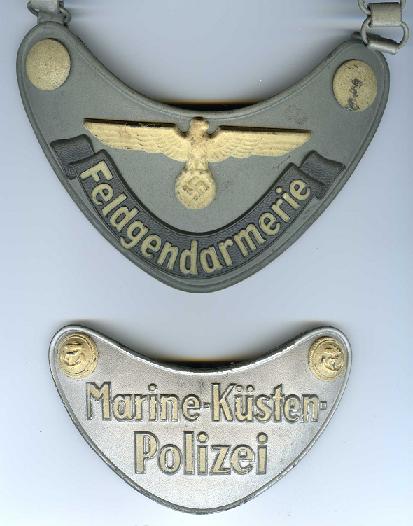 0
0 -
Reverse showing unique pin fitting rather than a chain.
Here is a pic of one being worn
http://gmic.co.uk/index.php?showtopic=35590
 0
0 -
Foolishly sold my last example many years back and it has taken a long time to find a replacement, fortunately in better conditiion that the one I had before.
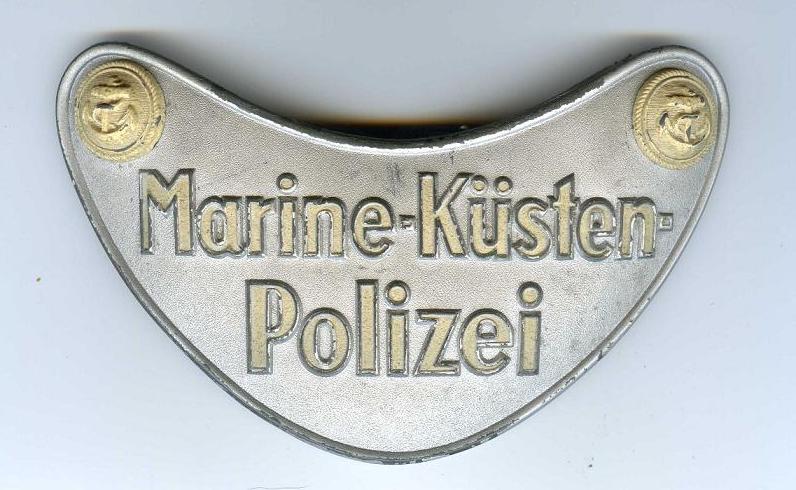 0
0 -
More evidence of the bargains still to be had on EBay. In need of careful cleaning at one end, but full length and pretty much undamaged.
 0
0 -
The bespectacled chap again from another photo, this time from the other side showing his Feldgendarmerie insignia.
All three Divisions fought on until May 1945 and survivors from all three Divisions fell into the hands of the Partisans, so unless he had a miraculous escape, he was probably murdered along with many of his fellow Croats.
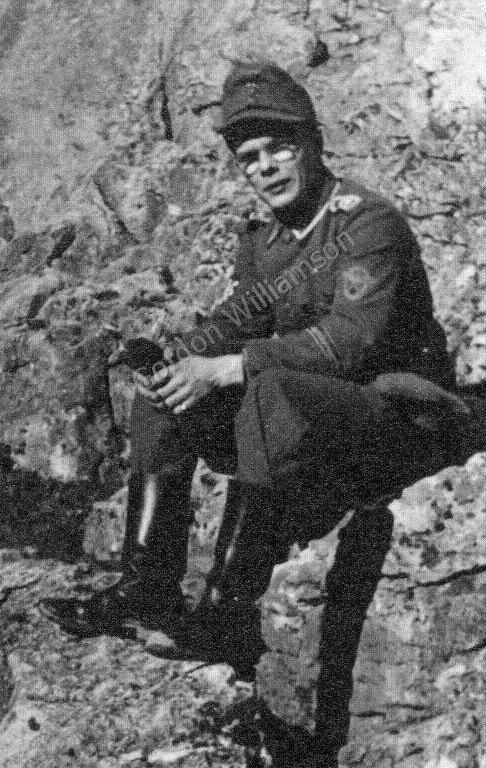 0
0 -
The German NCO has seen a bit of service. Note the Afrika cuffband. First ribbon on the ribbon bar (I think there are 5 in all) is most likely an EK, the second is I think a plain blue LS medal (possibly Police) then the ribbon for the Anschluss Medal, followed by the East Front medal and I think, the Italo German Campaign Medal for Afrika ?
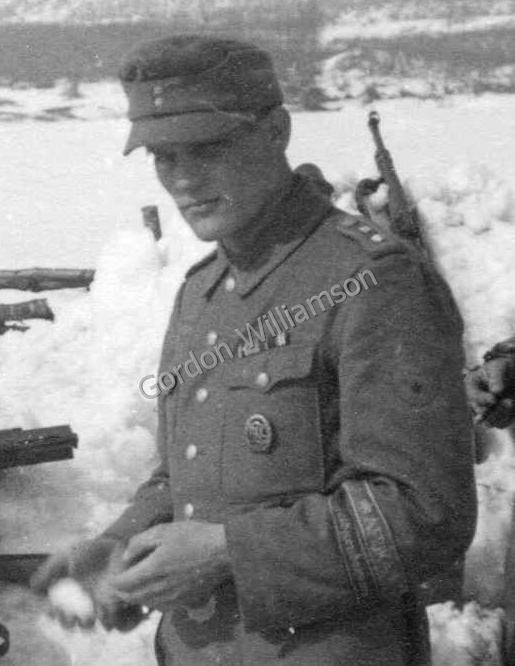
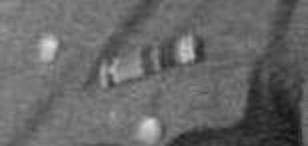 0
0 -
Note the Croat armshield.
Only real candidates for Croat troops in the Army are verst?rkten kroatischen Infanterie Regfiment 369 which is unlikely as a Regiment wouldn't have an integral Feldgendarmerie Trupp.
The later 369, 373 and 392 (kr.) Infanterie Divisionen all had their own Feldgendarmerie units and all also had a sprinkling of German NCOs (and the chap in the centre is certainly German)
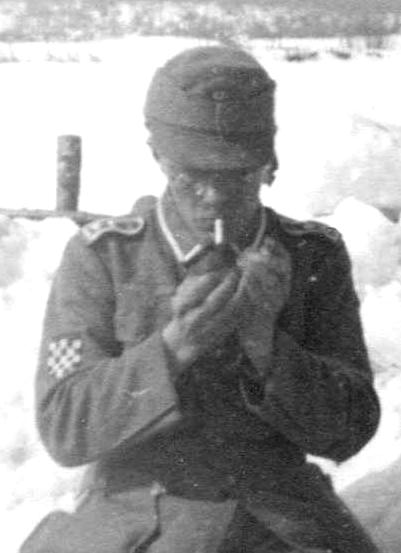 0
0 -
From a small group of photos recently obtained. The chap with the glasses lighting the cigarette appears in most of the photos.
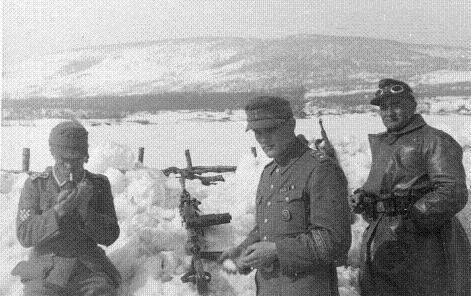 0
0 -
Now look at the Tombak version and you will see, in this same position, the tip of an additional leaf just showing above the stern of the boat.
Whatever it looks and feels like, if this leaf tip is missing and it has the retaining clip mounted on a disc - it is a Zinker.
 0
0 -
Here is one of the Zinc Junckers I owned. This one was sold to me as Tombak. (The seller refunded part of the payment when I pointed out it was Zinc. If you find one of these with a nice toned finish it can look very much like tombak and the weight isn't significantly different either.
However, as well as the use of the disc for mounting the retaining clip, there is a visible difference in die characteristics between Zinc and Tombak examples,
Look at the area above the stern of the boat which is circled.
 0
0 -
Can you show an example of the Tombak badge with this small disc ?
0 -
I've had examples of other badges by what I believe is the same (unknown) manufacturer. Always with the same shape of plate to which the retaining clip is attached, always needle pin and formed sheet metal hinge, and always with faint striations across the back. Clearly the badges had been held against a linishing belt to remove rough edges after the cropping die was used.
No idea of the maker, but pretty certain its not Wiedmann.
0




S&L Schnellboot badge 1st model
in Germany: Third Reich: Wehrmacht Medals, Decorations & Awards
Posted
The photo above is the one from the article which stated that these were copies. The "o" mark is very faint in this photo which is over-exposed, but is can just be seen half way between the retaining hook and the L12 mark.
If a buyer is happen to spend his money on one, thats really all that matters. Personally, I don't believe in them. The matter is made worse of course by the knowledge that S&L continued selling their Third Reich period stuff long after the war ended so even if actually made by S&L the possibility of being postwar manufactured or assembled has to be borne in mind. Not so much a case of whether S&L made these but when they made them, pre or post May 1945. - or both !
The "o" mark certainly isn't a definitive indicator of S&L. The small raised "o" mark can also be found on other manufacturers products. I have , for instance, seen this on a Funcke & Bruninghaus U-Boat badge. (See below right, circled)